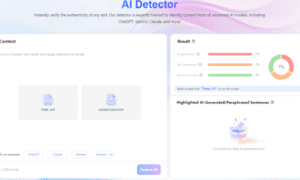When it comes to the world of software development, APIs and webhooks play a vital role in ensuring seamless communication across different software applications. Webhooks, specifically, are a powerful tool for creating real-time communication pathways, enabling systems to talk to each other almost instantly.
Understanding APIs and Webhooks
At a high level, an API (Application Programming Interface) is a set of rules and protocols that allows software applications to communicate with each other. It’s like a menu in a restaurant – you choose what you want, and the kitchen (the system with the API) prepares it for you.
On the other hand, a webhook is a way for an app to provide other applications with real-time information. Webhooks deliver data to other applications as it happens, meaning you get data immediately. Unlike typical APIs, where you would need to poll for data frequently in order to get it real-time. Webhooks are much more efficient for this.
Webhooks are often used to connect third-party APIs or software with each other, creating a chain of communication that can automatically trigger actions and share data. In essence, webhooks offer an elegant solution to the problem of helping software “speak” to each other, thereby offering significant webhook benefits for integrating across platforms.
Utilizing Webhooks in New Projects
When developing new projects, webhooks can serve a myriad of functions. They are used to detect events and trigger necessary actions, thereby automating processes and promoting efficiency.
Consider a typical use case within a remote team using a project management tool. Every time a task is updated or completed, a webhook could be triggered, sending a real-time notification to team members via a chat application. This immediate sharing of information keeps the team synchronized and up-to-date, even when they are working from different locations.
In more complex scenarios, webhooks could be used to integrate different platforms and tools that a remote team might use. For example, a webhook could sync an e-commerce platform with a company’s inventory management system. Whenever a new sale is made, the inventory is automatically updated via a webhook.
To get started using webhooks in your project, you will need to:
- Identify the events in your application that should trigger a webhook
- Implement the endpoint that will receive the webhook data
- Register the webhook URL with the application triggering the event
- Secure your webhooks to ensure data integrity
Exploring Specific Use Cases
Beyond the basics, there are several ways that webhooks can be used to streamline communication and enhance functionality in a remote team.
Consider the case of a remote support team that relies on a ticketing system. A webhook can be set up to trigger whenever a new support ticket is created. This webhook could then send a message to the support team’s chat application, ensuring that team members are immediately notified of the new issue. In addition, the webhook could create a new task in the team’s project management tool, kick-starting the process of resolving the ticket.
Another example involves integrating a company’s CRM system with its email marketing tool. Whenever a new lead is entered into the CRM, a webhook could automatically add that lead to an email marketing list. This facilitates immediate and personalized communication with potential customers, enhancing the lead nurturing process.
For real-life examples, consider webhook platforms like Hookdeck. This centralized webhook hub allows you to control all your webhooks from a single place, create rules and define behaviors for your connections, like automatic retries and custom rate limits. These functionalities provide an easy and efficient way to manage webhooks, especially in a team setting.
Conclusion
Webhooks play a critical role in enabling real-time communication for remote teams, promoting efficiency and collaboration. As we navigate the digital age, webhooks continue to facilitate inter-platform communication, opening the door to a new world of possibilities for seamless integration and real-time data sharing.



































